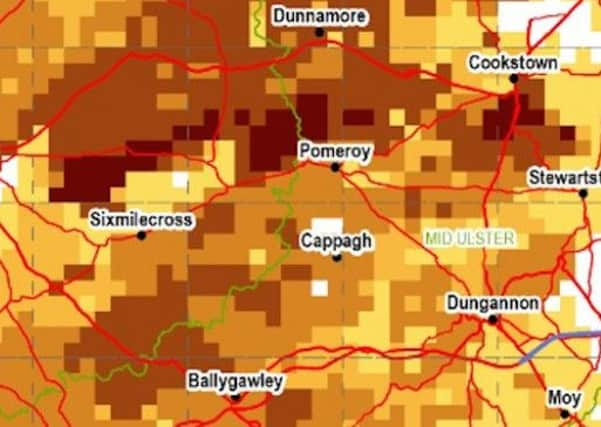Warning after 90% increase in radon gas affected homes in Mid Ulster


The Mid Ulster Council has advised homeowners to take precautions to protect themselves from radon, a naturally occurring radioactive gas present throughout the Earth’s crust. Radon has been called the “worst environmental pollutant”.
“Local residents can check whether their homes are in an affected area by accessing the radon web site: www.ukradon.org”, said a spokesperson.
Advertisement
Hide AdAdvertisement
Hide Ad“The map identifies those areas which are more likely to have high radon levels and where householders or landlords are advised to test for radon. While not all homes in an affected area will be at a level which requires attention, the best advice is to arrange to have a test which will then show if action needs to be taken to reduce levels of radon.”
The warning came after the Northern Ireland Environment Agency published a new map for radon gas exposure in Northern Ireland, which has increased the total number of homes deemed to be at-risk.
The investigation shows that radon is at particularly high levels around Ballygawley, Pomeroy, Cappagh and Cookstown. In fact, the Mid-Ulster Council area has recorded an increase from 10,000 to 19,000 affected homes, while the figure has risen from 12,000 to 21,000 in Omagh and Fermanagh.
A spokesperson for Public Health England’s Centre for Radiation, Chemical and Environmental Hazards said: “We estimate some 155,000 homes, about 1 in 5 in Northern Ireland, are now in ‘Affected Areas’: these are places where some householders are exposed to radon at a level where we recommend protective action.
Advertisement
Hide AdAdvertisement
Hide Ad“This is an increase on the last estimate we made of the total number of Northern Ireland homes at risk. Of course few will have radon at a level that requires attention, but there will be some.”
Research over the last 20 years has shown that there is no safe level of radon.
It exposes children in affected homes to higher levels of radiation than workers at the Sellafield nuclear re-processing plant.
Scientists point out that if it were blue it would be the subject of widespread alarm but because it is odourless and colourless it is ignored.
Every building contains a certain amount of radon gas but the levels are usually quite low.